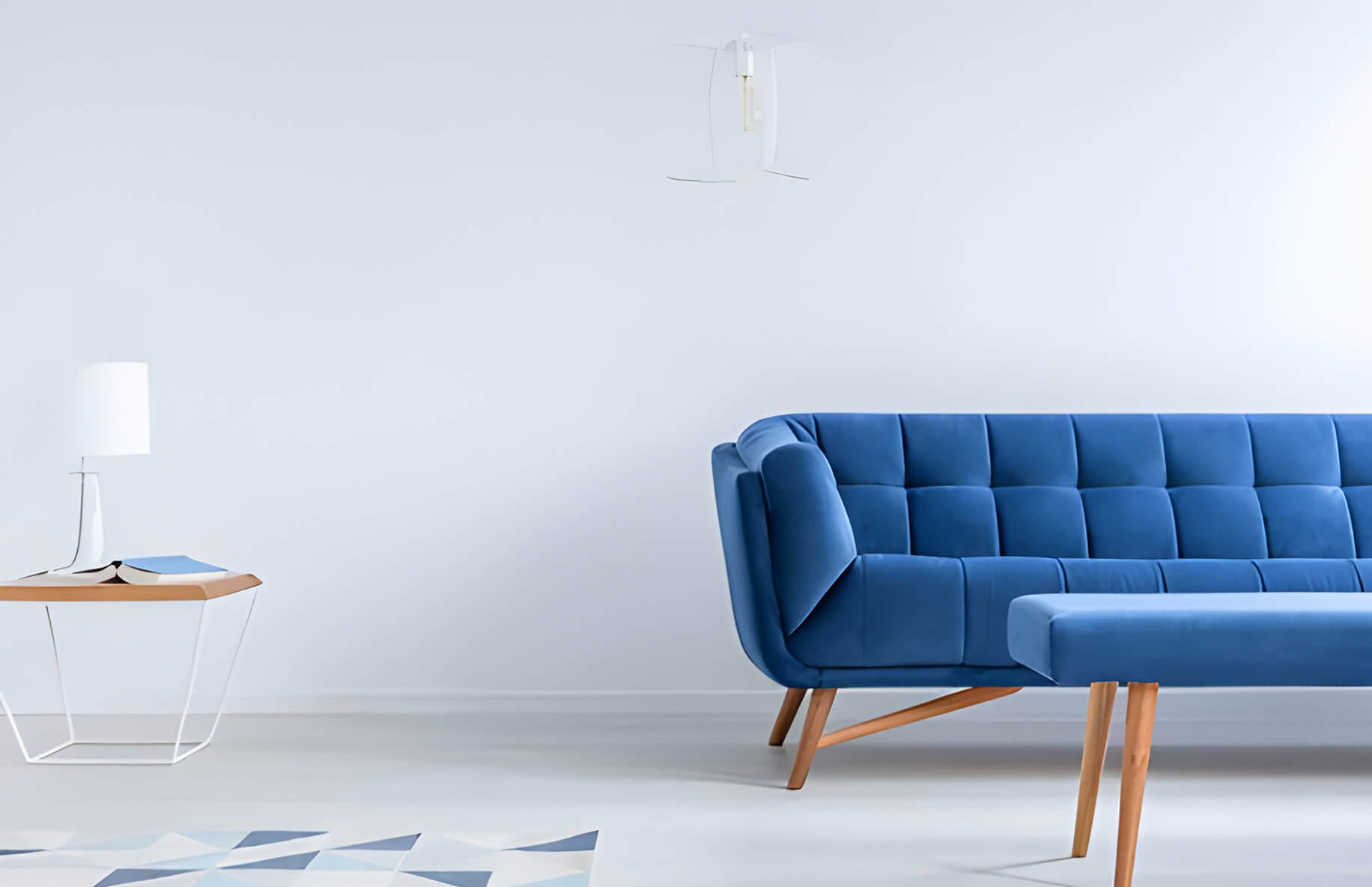Voices of Elegance: Testimonials from Nina Interiors' Satisfied Clients
In the world of interior design, where the essence of a brand is often echoed in the words of its...

Embarking on the journey of selecting upholstery for your furniture is akin to entering a world of fabric fantasy. The choices are vast, the textures varied, and the colours abundant. Yet, amidst this sea of possibilities, the quest for the perfect upholstery involves more than mere aesthetics. It is a blend of functionality, durability, and personal style that transforms a piece of furniture into a statement of comfort and luxury. Join us as we delve into the intricate realm of fabric selection, exploring the nuances that guide the decision-making process and unlocking the secrets to bringing your furniture fantasies to life.
The journey into the world of upholstery begins with a fundamental understanding of fabric basics. Each type of fabric carries its own set of characteristics, influencing not only the visual appeal but also the practicality and longevity of the upholstery. Cotton, linen, wool, leather, and synthetic fabrics are among the diverse options, each offering a unique blend of comfort, durability, and maintenance requirements.
Cotton, a natural fiber, stands out for its versatility and comfort. It is breathable, soft to the touch, and available in a wide range of colours and patterns. Cotton upholstery is easy to clean, making it a practical choice for both residential and commercial spaces. However, it may be prone to wrinkling and fading over time.
Linen exudes an understated elegance with its textured appearance and natural luster. It is a breathable fabric, providing comfort in various climates. While linen is resistant to pilling and fading, it may wrinkle easily, adding a touch of casual sophistication to furniture pieces.
Wool upholstery brings warmth and resilience to furniture. It is known for its natural insulation properties, making it suitable for colder climates. Wool is resistant to wrinkles and flame-retardant, adding a layer of safety to upholstered pieces. However, it may require professional cleaning to maintain its integrity.
For those seeking timeless luxury, leather upholstery is an unparalleled choice. It exudes sophistication, durability, and a unique patina that develops over time. Leather is resistant to stains and easy to clean, making it a favorite for high-traffic areas. However, it requires regular maintenance to preserve its supple texture.
Synthetic fabrics, such as polyester, nylon, and microfiber, offer a spectrum of choices in terms of durability and style. These fabrics are resistant to stains, fading, and wrinkles, making them ideal for households with pets or children. Synthetic options often mimic the look and feel of natural fibers while providing enhanced practicality.
The perfect upholstery choice extends beyond aesthetics to align with lifestyle and functionality. Before delving into the vast array of fabric options, consider the daily activities and demands placed on the furniture. Questions to ponder include:
Understanding these aspects helps in narrowing down the fabric choices based on the intended use and the level of durability required. For instance, a family room sofa may benefit from a stain-resistant synthetic fabric, while a formal living room piece can indulge in the luxurious touch of velvet.
Once the foundation of fabric type is established, the journey into fabric fantasy extends to exploring patterns and colours. Upholstery serves as a powerful tool for expressing personal style and enhancing the overall aesthetic of a space.
The choice of patterns ranges from subtle textures to bold statements. Consider the existing décor and the desired atmosphere of the space when selecting patterns. Stripes, florals, geometric shapes, and abstract designs each contribute a distinct personality to the furniture. Mixing and matching patterns can add depth and visual interest to the overall design.
Colour selection plays a pivotal role in determining the mood and ambiance of a room. While trends may influence colour choices, it is essential to consider long-term preferences and the existing colour palette of the space. Neutral tones offer versatility and timelessness, while bold colours make a striking statement. The interplay of colours in upholstery contributes to the cohesion of the overall design.
Texture is the tactile dimension that elevates upholstery from visual appeal to sensory delight. The texture of fabric adds depth and character to furniture, creating a multi-sensory experience. Common textures in upholstery include:
Weaving different textures into the design allows for a dynamic and layered aesthetic, enhancing the overall sensory experience of the furniture.
The allure of a particular fabric must be complemented by practical considerations of maintenance and longevity. Different fabrics require varying levels of care, and understanding these requirements is crucial for preserving the integrity of the upholstery.
Investing in high-quality, durable fabrics aligns with a long-term vision for the furniture, ensuring that it retains its appeal and functionality for years to come.
As sustainability becomes a cornerstone in design considerations, the fabric selection process is no exception. Embracing eco-friendly and sustainable fabrics aligns with a conscientious approach to interior design. Consider the following eco-friendly fabric options:
Choosing sustainable fabrics not only promotes environmental responsibility but also adds a layer of authenticity to the overall design.
Each furniture piece comes with its own set of considerations and requirements when it comes to upholstery. Tailoring fabric choices to the specific needs of each piece ensures a cohesive yet functional design.
Sofas and sectionals are central to the living room, serving as focal points for socializing and relaxation. Opt for durable and stain-resistant fabrics, especially in households with children or pets. Consider the scale of the furniture in relation to the room size, choosing patterns and colours that enhance the overall design without overwhelming the space.
Dining chairs witness frequent use and exposure to spills during meals. Selecting easy-to-clean fabrics, such as leather or treated synthetic materials, ensures practicality. Upholstery in dining areas can also introduce textures and patterns to complement the dining table and surrounding décor.
Accent chairs provide an opportunity to experiment with bold patterns and textures. These pieces can serve as statement elements in a room, adding personality and visual interest. Consider the placement of accent chairs to create balance and cohesion within the overall design.
Ottomans and benches offer versatility in design and function. Choosing upholstery that complements the existing furniture while adding a touch of contrast contributes to a harmonious aesthetic. Consider the intended use, whether as a footrest, additional seating, or a decorative accent.
Bedroom furniture, including bed frames, headboards, and benches, invites a blend of comfort and style. Upholstery in the bedroom can range from luxurious fabrics like velvet for a statement headboard to practical and easy-to-maintain options for bed benches.
The fabric fantasy extends beyond selecting a single type of upholstery for an entire room. The art of mixing and matching fabrics adds depth and visual intrigue to the design. Consider the following techniques for effective fabric combinations:
The key is to strike a balance between cohesion and diversity, allowing each fabric choice to contribute to the overall narrative of the room.
While the journey into fabric fantasy is an exciting exploration of personal style, seeking professional guidance can elevate the decision-making process. Interior designers bring a wealth of knowledge in fabric selection, considering factors such as room dynamics, lighting, and overall design goals. Collaborating with a design professional ensures a tailored approach to upholstery that aligns with both aesthetic preferences and practical considerations.
Choosing the perfect upholstery for your furniture is a journey of weaving dreams into fabric. It is an intimate exploration of personal style, lifestyle considerations, and the desire for a harmonious living space. From understanding the characteristics of different fabrics to embracing sustainability and navigating the nuances of pattern and colour, the fabric selection process is an art form that transforms furniture into a canvas of comfort and beauty. As you embark on this journey, let your imagination soar, and may your furniture be adorned with fabrics that tell a story of elegance, functionality, and the fabric fantasies that shape your unique design narrative.
In the world of interior design, where the essence of a brand is often echoed in the words of its...
In the pursuit of creating harmonious and balanced living spaces, the ancient Chinese practice of Feng Shui has emerged as...
The evolution of the modern workplace has brought about a significant shift in the way we perceive and design home...
In the ever-evolving landscape of interior design, the concept of sustainability has emerged as a guiding principle, reshaping the way...
Click one of our representatives below to chat on WhatsApp or send us an email to marketing@ninainteriors.co.ug
Powered by WhatsApp Chat

